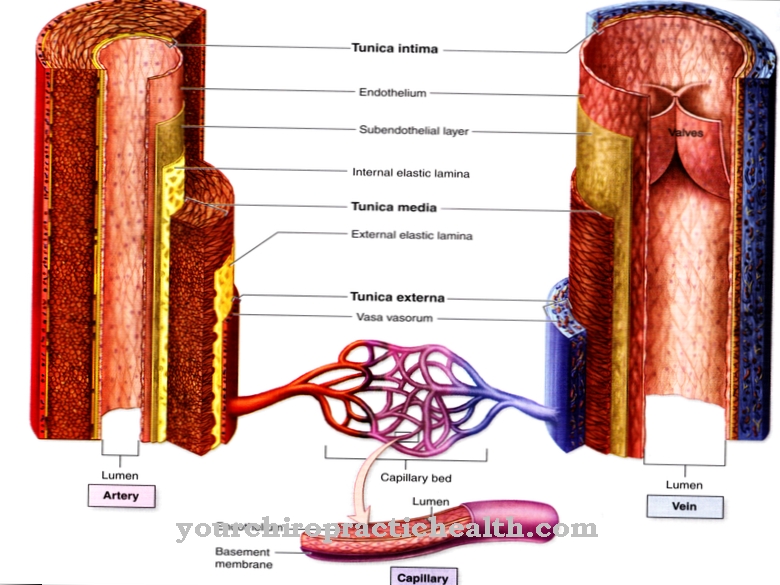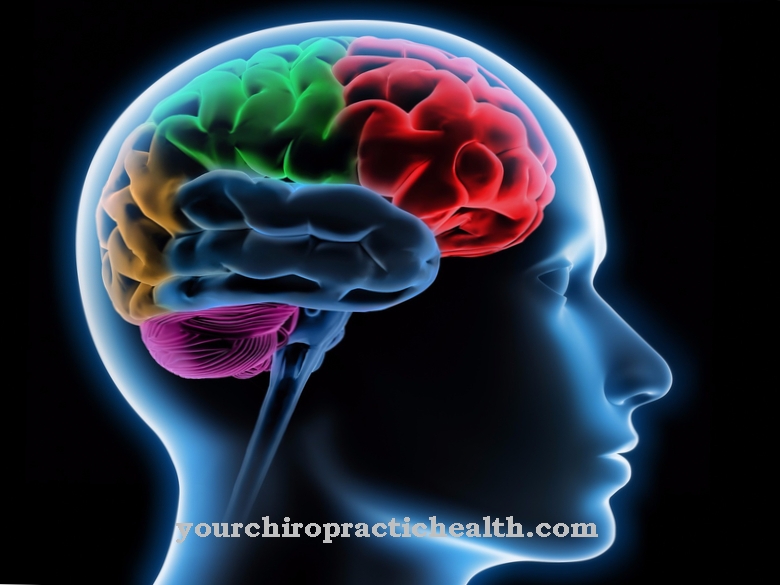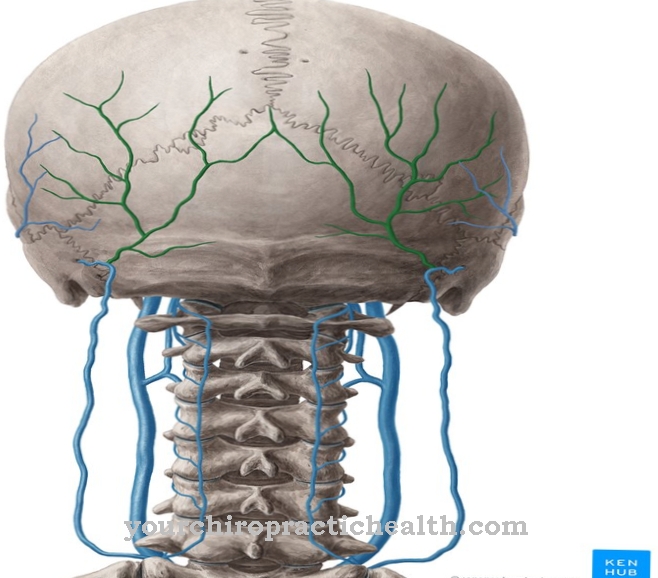Pericytes are cells of the extracellular matrix and enclose all capillary vessels with their contractile processes. In one main function, they take on the widening and narrowing of the capillaries, because the endothelia of the capillaries have no muscle cells and are dependent on the control of their lumen from outside. In addition, pericytes take on important functions in the proliferation of endothelial cells during the formation (angiogenesis) of vessels.
What is a pericyte?
Pericytes (pericytes) are part of the extracellular matrix, i.e. part of the connective tissue. Characteristic of the pericytes are their contractile star-shaped cell processes, with which they span the capillaries in order to be able to widen or narrow them as required.
Because smooth muscle cells are also integrated in the walls of arteries and veins, the (healthy) vessels can do the widening and narrowing themselves. The vessel walls of the capillaries do not contain smooth muscle cells, so they rely on the support of the pericytes. Most pericytes are derived from the mesenchyme. Some authors suggest that they can also develop by transforming endothelial cells.
Conversely, it is also assumed that other mesenchymal cells such as fibroblasts, osteoblasts, chondrocytes and others can develop from pericytes. Because pericytes are integrated directly into the basement membrane of the capillaries, they are also included in the vascular wall cells. Pericytes are found in all tissues that are crossed by blood vessels. It is noticeable that they are particularly common in the central nervous system and are associated with maintaining the blood-brain barrier.
Anatomy & structure
Morphologically, pericytes do not have a uniform shape. The outer shape of the cells adapts to their respective function. All pericytes have a nucleus and a relatively small amount of cytoplasm. The core changes depending on the tasks that the pericytes perform.
In tissue that is regenerating or is in the growth phase, the nuclei take on a spherical shape and are euchromatically loosened. In differentiated tissue the nuclei appear heterochromatic and flattened. The cytoplasm contains mitochondria for energy supply, myofilaments and glycogen particles. The myofilaments are thread-like protein structures which, in a complex interplay between myosin and actin, ensure the contractility of the multiple cell processes of the pericytes. The connection between the processes and the endothelium of the capillaries is made via so-called tight junctions, which also transfer the contraction forces to the endothelium of the capillaries.
The cytoplasm also contains multivesicular inclusions and plasma lem vesicles, which are otherwise only found as vesicular inclusions in the cytoplasm of endothelial cells. The multiple cell processes surrounding the capillaries often have club-shaped extensions at their ends. Some authors argue that these extensions serve to close or open the gaps in the endothelium of the capillaries, if necessary, in order to control the exchange of substances that takes place via the gaps (holes).
This assumption is compatible with the accumulation of pericytes in the CNS. In the CNS, the pericytes enclose the capillaries almost completely, so that they can almost completely prevent the exchange of substances between the capillaries and the surrounding nerve tissue if necessary. Pericytes have all the necessary “tools” to be able to synthesize proteins.
Function & tasks
The pericytes perform a number of different well-known major roles and functions. However, not all functions of the pericytes are sufficiently known, so that further research is required. One of the undisputed main tasks is the regulation of vascular tone in the capillaries that enclose them.
The pericyte processes can contract or dilate and transmit the contracting or dilating effect to the capillaries via tight junctions. Pericytes also play an important role in maintaining the blood-brain barrier in the CNS. Extensions to their processes make it possible to almost completely close the fenestrated (with gaps or holes) endothelia of the capillaries, through which the exchange with macromolecules takes place. This creates a very selective exchange of substances between the CNS and the blood capillaries. This is to ensure that toxic substances, pathogenic germs or certain hormones cannot penetrate the nervous tissue of the CNS.
Another role of the pericytes is to support angiogenesis, the formation of new blood vessels in new or growing tissue. The cell extensions of the pericytes give the new blood vessels physical stability and synthesize messenger substances that stimulate angiogenesis. The role pericytes play in inflammation caused by infections or blunt (sterile) injuries has not yet been adequately researched.
Diseases
Because of the almost ubiquitous distribution of pericytes in the body and their key role in maintaining the capillary blood and lymph flow, functional disorders of the pericytes play a role in many diseases and symptoms. Often symptoms are triggered by an excess of pericytes in a certain tissue section or by their lack.
In both cases there are disturbances in capillary blood pressure and substance exchange. In the early stage of diabetic retinopathy, there is an increasing loss of pericytes in the area of the retina, so that the pericytes' holding function for the capillaries is lost and there are often microaneurisms on the retina with corresponding visual impairments.
The loss of pericytes in the CNS of older people can impair the function of the blood-brain barrier and lead to an unintended exchange of substances and trigger neurodegenerative inflammation and increased cell death (apoptosis) of the nerve cells. After strokes it has been observed that capillaries in the area of the CNS were narrowed by pericytes and then died, which further impaired the blood-brain barrier and led to increased death of nerve cells.



























